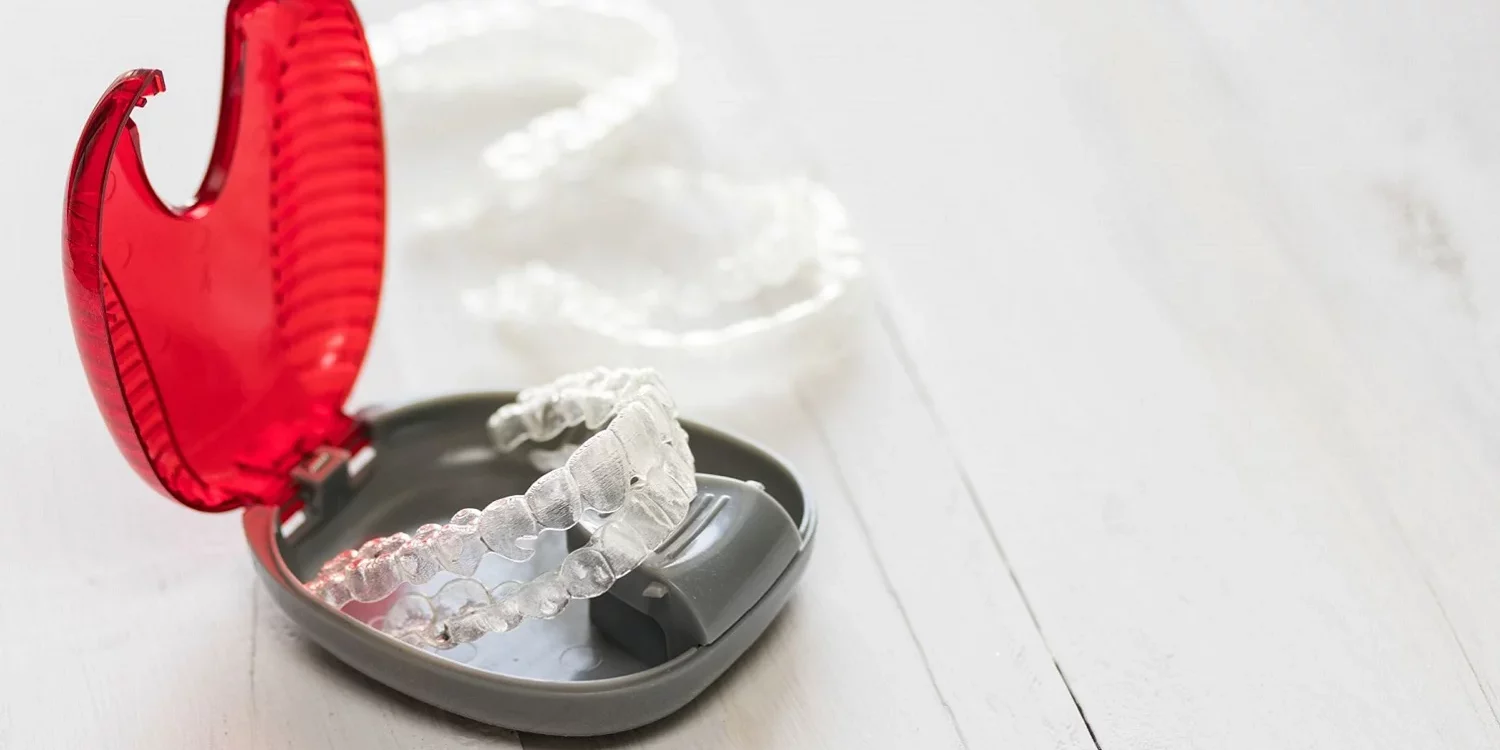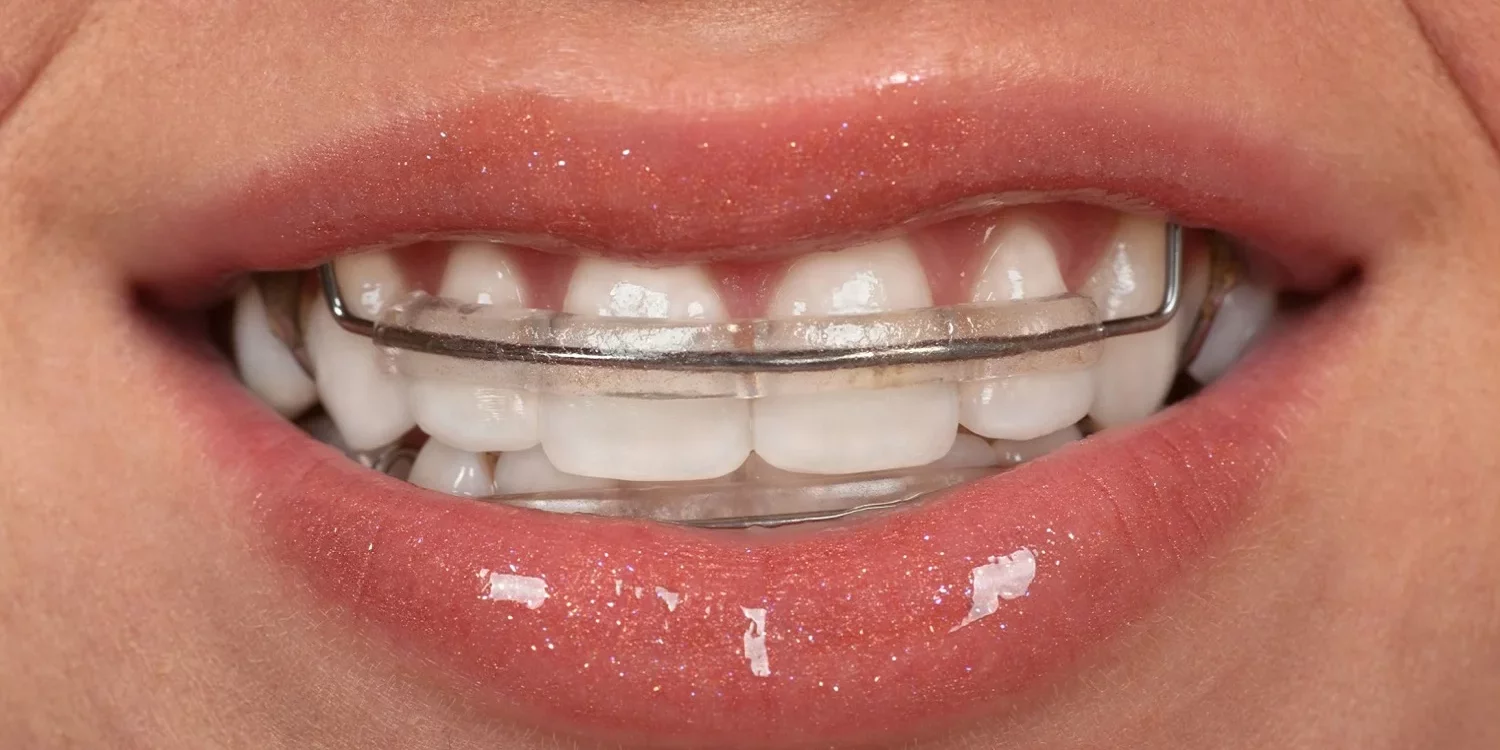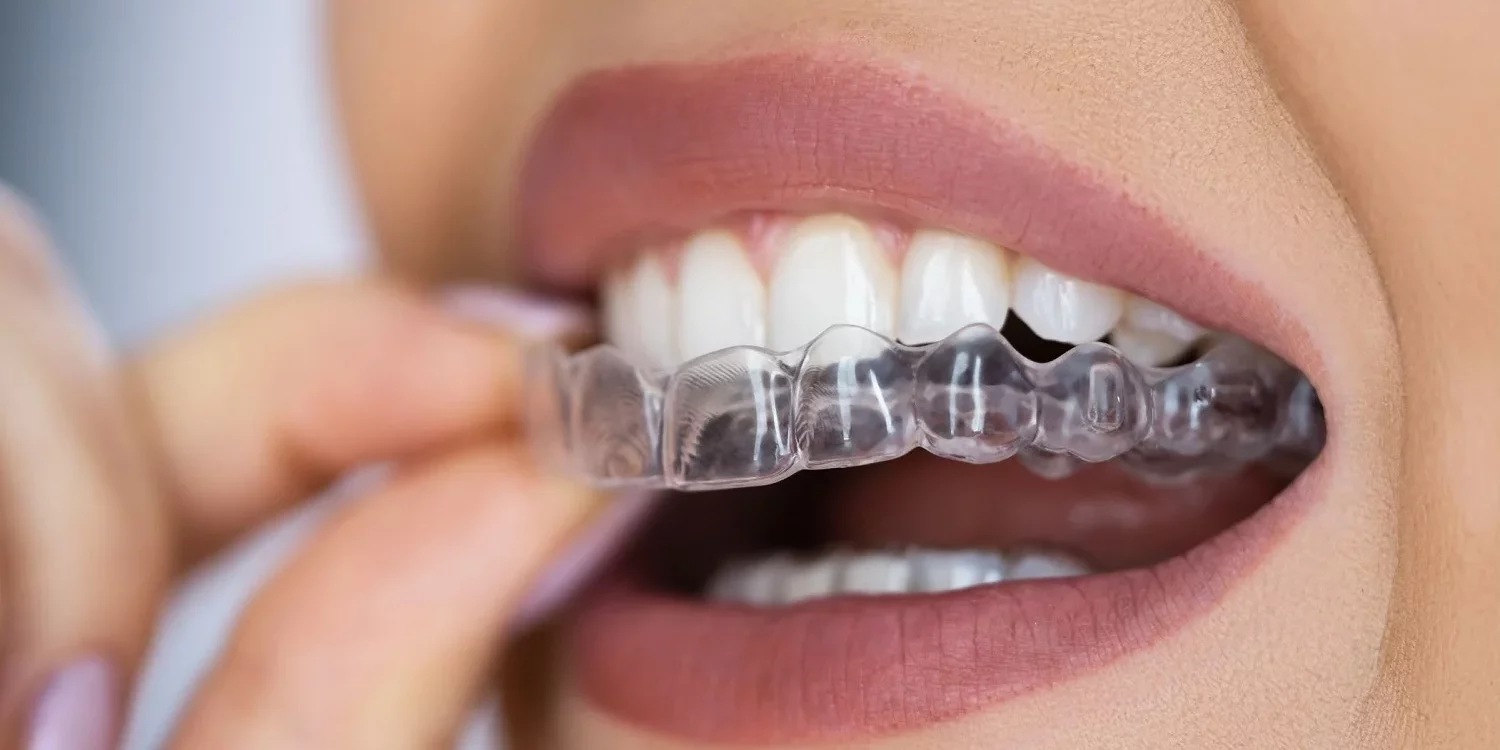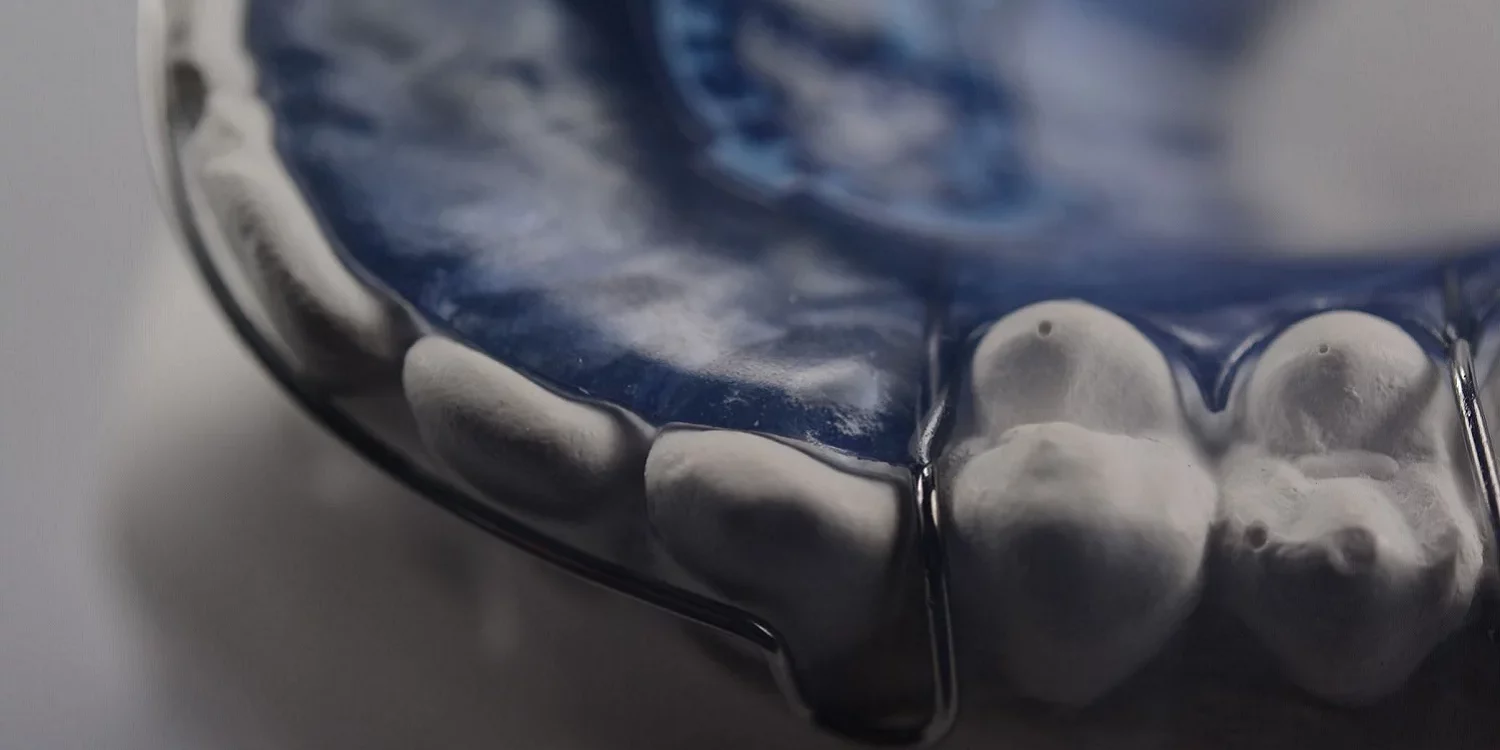Last Updated on: 22nd March 2024, 07:04 am
After completing successful orthodontic treatment, whether using traditional braces or clear aligners, it is crucial to continue taking care of the newly achieved alignment of your teeth. Dental retainers play an essential role in this process by ensuring that the teeth remain in the proper position for the long term.
What is a Dental Retainer?
Orthodontic retainers are devices designed to maintain the new position of teeth after orthodontic appliances have been removed. They allow the surrounding tissues to gradually adapt to the new alignment, ensuring that your newly perfected smile is maintained for many years to come.
If you’re curious about how braces do their job in fixing teeth, make sure to take a look at our comprehensive guide all about it.

What are the Different Types of Dental Retainers?
Fixed wire retainers
These retainers are made of a thin metal wire that is placed on the back of the teeth, usually behind the upper and lower front teeth. They are fixed and permanent, meaning you can’t take them off. Although not visible from the outside, they require meticulous care as food debris can get trapped in them. Fixed wire retainers are great for maintaining teeth alignment without the worry of forgetting to wear them.

Clear Aligner Retainers
These retainers are similar in appearance to the aligners used during treatment but are designed to maintain alignment rather than move teeth. They are removable and easy to care for, making them popular. They are very aesthetic since being made of transparent acetate, they can go unnoticed.

Hawley type retainers
These are removable appliances that have an acrylic portion that is positioned in contact with the palate or floor of the mouth. The wires that will be located on the front of the teeth rest on the acrylic part. Although they may require an adjustment period, they are a versatile solution for maintaining teeth alignment.

What Happens if I don’t Wear my Dental Retainer Properly?
Proper use of dental retainers is essential to ensure that the results of orthodontic treatment are maintained in the long term. If you do not wear your retainers as directed by your orthodontist, there is a chance that your teeth will gradually begin to shift back to their original positions.
This could result in partial or complete loss of the alignment achieved, requiring additional interventions to correct the situation. Although this may seem simple at first glance, a second orthodontic treatment can be harmful to the dental roots, which is why it is not possible to perform the treatment again in all cases.
Caring for your dental retainer for long-term tooth alignment
Proper maintenance of your dental retainer is essential to preserving the alignment of your teeth and the overall health of your mouth. Here are some tips to care for your retainer and ensure it remains effective:
Regular cleaning: If you wear a removable retainer, be sure to clean it daily with a soft brush and warm water. Avoid using toothpaste, as it can be abrasive. Fixed retainers also require meticulous oral hygiene to prevent plaque and food debris buildup around the wire.
Careful handling: If you have a removable retainer, handle it carefully when inserting and removing it to avoid damaging it. Avoid bending or twisting fixed wire retainers, as this could affect their effectiveness.
Secure storage: When you are not wearing your removable retainer, store it in its protective case. Avoid wrapping it in tissue paper or napkins, as it could be accidentally lost.
Constant use: Follow your orthodontist’s instructions for how long you should wear your retainer daily. Consistency is key to maintaining teeth alignment.
Regular reviews: Schedule regular appointments with your orthodontist so they can evaluate the effectiveness of your retainer and make adjustments if necessary.
Conclusion
Orthodontic retainers play an essential role in maintaining the alignment of your teeth after completing treatment. With different options available, from fixed wire retainers to removable retainers and clear aligners, it is essential to follow your orthodontist’s instructions and properly care for your retainer to ensure a beautiful, aligned smile in the long term. Don’t underestimate the power of retainers on your journey to optimal oral health and renewed confidence in your smile.
Frequently Asked Questions
Many dentists use a combination of fixed and permanent retainers in order to preserve proper dental alignment. You may need both types at the same time. The primary goal of all types of retainers is to ensure that your dental alignment is maintained for many years
Transparent retainer: Retainers should be worn continuously, both day and night, right after completing orthodontic treatment. Typically after 3 months, you can consider using them only at night, but this will be evaluated at a later stage. Additionally, Invisalign produces a clear retainer of excellent quality and greater durability called “Vivera.”
Throughout his two decades of orthodontic experience, Dr. Patel has observed that, in general, the lifespan of a removable retainer is typically approximately 5 to 10 years before it begins to show signs of needing replacement. On the other hand, permanent retainers can last for decades if properly cared for.
Experts recommend cleaning your retainer at least once a day. You can also clean it thoroughly with an antibacterial denture cleaner once a week to help eliminate bacteria from the retainer.
Contact us
If you have any questions about this or other topics, you can contact us at Channel Island Family Dental as well as our Facebook page. We look forward to your visit and we will make a timely diagnosis. Our dentists in Oxnard, Saint Paula, Venture, Newbury Park, and Port Hueneme will be able to guide you toward the best treatment to take care of your health and give you back your best smile.
Bibliography
1. Braces. (Mar 22, 2023). WebMD. https://www.webmd.com/oral-health/braces-and-retainers
2. Healthdirect Australia. (2023). Dental braces and retainers. https://www.healthdirect.gov.au/dental-braces-and-retainers
3. LeBrun, N. (Jun 15, 2022). What are the different types of retainers for teeth? Verywell Health. https://www.verywellhealth.com/types-of-retainers-5235272
4. Retainer types: Bonded, Hawley, Essix, and clear retainers. (May 29, 2018). Healthline. https://www.healthline.com/health/retainer-types
5. Retainers. (Oct 20, 2022). American Association of Orthodontists. https://aaoinfo.org/treatments/retainers/
6. Teeth retainer. (Aug 25, 2022). Cleveland Clinic.https://my.clevelandclinic.org/health/treatments/10899-teeth-retainer


